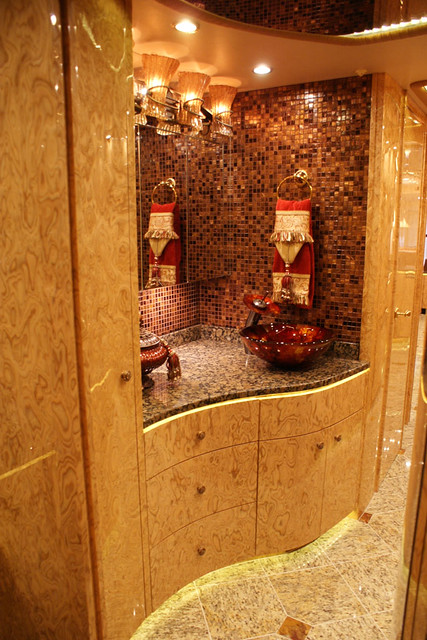Monolithic Microwave Integrated Circuit
MMICs are semiconductor devices that operate at microwave frequencies. They perform a variety of functions such as mixing, power and low-noise amplification and high-frequency switching. They are fabricated using semiconductors such as gallium arsenide (GaAs) and silicon.
Unlike hybrid microwave integrated circuits, monolithic microwave integrated circuits have a very high degree of integration. This allows them to be smaller, more cost-effective and provide higher performance.
Cost
Unlike hybrid integrated circuits, monolithic microwave integrated circuits (MMIC) combine multiple components and circuit blocks on a single semiconductor substrate. This helps reduce component and assembly costs and improves reliability. They are also smaller and lighter in size. MMICs are used in a variety of applications, including phased array antennas for communications systems and radars. They are also used in satellite systems that require small, low-cost circuits.
MMICs are fabricated using a wide range of materials and techniques, including MOS and PHEMT technologies. This book introduces readers to important basic concepts in the field of MMIC technology, low dropout regulator including fabrication and processing, device physics, circuit design, and CAD tools. The chapters include comprehensive references and open discussions of practical issues, making it ideal for both researchers and engineers.
The COVID-19 pandemic led to a global slowdown in semiconductor shipments, but demand is picking up as the industry recovers. This is primarily due to the increase in data generation and transmission and growing demand for wireless communication infrastructure. Additionally, work from home conventions and mandated work-from-home standards in some regions have increased network demand.
MMICs are based on different types of semiconductors, with gallium arsenide and indium gallium phosphide being the most common. They are categorized into three categories: MESFET, HEMT, and E-pHEMT. During the projection period, the HEMT segment is expected to lead the market with its high efficiency and lower power consumption.
Performance
MMICs have been developed to replace traditional tubes and cavities used in microwave radar and telecommunication systems. They offer higher performance, lower weight, and more power efficiency than their predecessors. The MMICs also have a smaller footprint and can operate at higher frequencies than their counterparts. They are ideal for aerospace systems, where size, weight, and power (SWaP) is a primary consideration.
MMIC devices are made from high-quality semiconductor materials, such as GaAs and silicon. They are typically fabricated using batch processing techniques, such as diffusion or ion implantation. They are then bonded to a substrate with metalized wires or contacts. The resulting integrated circuits are similar to hybrid microwave integrated circuits (HMIC), but they contain monolithic components instead of multiple discrete devices and other elements.
These monolithic devices can be fabricated in small packages, which make them more affordable than discrete components. They can also be packaged in standardized IPC form factors, such as QFN or SOT. In addition, these devices are indistinguishable from standard silicon integrated circuits when they are encapsulated in an epoxy material.
A fabless semiconductor firm called Nxbeam Inc. recently announced that it will produce new Ku-band and Ka-band gallium nitride (GaN) monolithic microwave integrated circuit (MMIC) power amplifiers. The amplifiers will be suitable for satellite communication terminals, and they are designed to provide exceptional output power, gain, and efficiency in a compact footprint. This is expected to boost the MMIC market.
Flexibility
Microwave integrated circuits are the foundation of today’s advanced RF products. They reduce signal-to-noise ratio by combining multiple active and passive components into one package, saving space on a printed circuit board (PCB) layout. Two common types of RF components are hybrid microwave integrated circuits and monolithic microwave integrated circuits (MMICs).
MMIC technology can be used to develop flexible electronic circuits that offer the potential to significantly reduce system volume, weight, and cost. In addition, the technology offers advantages over hybrid (discrete component) systems in the areas of radiation hardness and compact size.
A team of researchers has developed a flexible monolithic microwave integrated circuit that integrates amplifier, receiver, and switch functions on a single silicon substrate. This new design has the potential to revolutionize mobile device and wireless communications technology.
The IC is comprised of a SiGe-based RF amplifier and individual heterojunction bipolar transistors. It is directly transformed from a foundry-produced multilayered MMIC using a series of etching and encapsulation steps. This approach removes the original semiconductor substrate and replaces it with a soft silicone elastomer that allows the IC to be bent at various angles while maintaining active electronic functionality.
The resulting circuit can be placed inside a protective molded case that enables it to support a variety dynamic power management of RF applications, including phased array antenna systems. The package has been designed to minimize undesired resonances, reflections, losses, and impedance mismatches. It is also hermetic, meaning that the IC can operate at frequencies up to 44 GHz without losing performance.
Size
A monolithic microwave integrated circuit consists of circuit blocks made on a single semiconductor chip. These circuits have a variety of functions, including amplification, switching, and mixing. These devices are used in high-frequency microwave applications, such as radars and telecommunications systems. They can also be used in satellite systems. They are more efficient than traditional mechanical beam steering antennas, which require multiple phase shifters and amplifiers to achieve a large scan angle.
These devices can be made from a variety of materials, including silicon and gallium nitride (GaN). A typical monolithic MMIC has more than 50 components on it, but the physical size is small. These chips can be fabricated on an insulating substrate, which helps to reduce parasitic effects. They are also more expensive than hybrid MICs, but they provide better performance at higher frequencies.
MMICs are a significant advance in RF technology, replacing tubes, cavities, and discrete devices. They are also smaller and lighter than their predecessors. They are especially important in microwave and millimeter-wave applications. These devices can be incorporated in receivers and transmitters, phased-array antennas, and sensors.
MMICs are available in a wide variety of package styles. Conventional ceramic packages have limitations caused by ring resonance, but a new metallized multilayer ceramic package has been developed to minimize this effect. It can handle up to 30 GHz.

